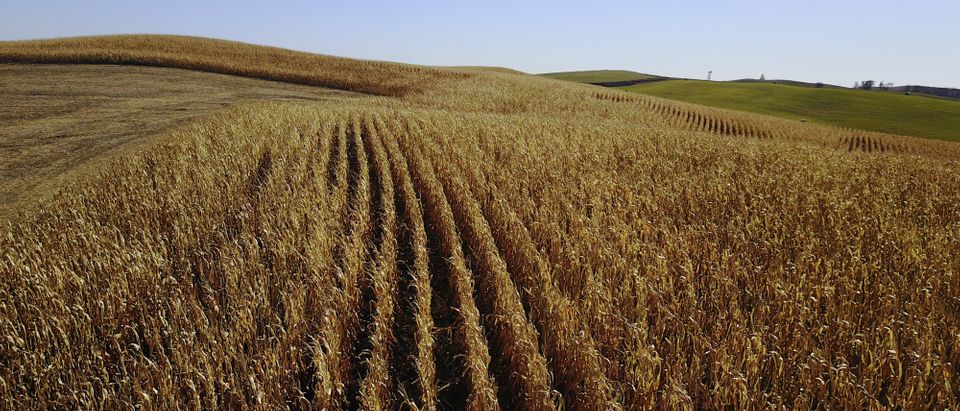U.S. corn states have actually experienced slightly cooler summers since the mid-20th Century, according to a new study documenting how the regions bucked the overall global warming trend.
Scientists with the Massachusetts Institute of Technology (MIT) found the intensification of agriculture operations actually cooled Midwest regions from 1950 to 2009, showing the importance of local land-use in climatic changes.
“During the 20th century, the midwestern U.S. experienced regional climate change that’s more consistent with what we’d expect from land-use changes as opposed to other forcings,” MIT hydrologist Elfatih Eltahir said in a statement.
Eltahir said they found “substantial changes in regional patterns of temperature and rainfall” due to the intensification of agriculture operations. Each time crops breathe in carbon dioxide through photosynthesis, they release some moisture.
The study was promoted by University of Colorado scientist Roger Pielke, Sr., who’s long been pushing for “consensus” scientists to recognize that land-use changes can exert strong influence on regional temperatures. Pielke was not involved in the research.
“This is a really important, excellent study,” Pielke said in a statement. “The leadership of the climate science community has not yet accepted that human land management is at least as important on regional and local climate as the addition of carbon dioxide and other greenhouse gases into the atmosphere by human activities.”
“Intensive agriculture influences U.S. regional summer climate”
“..climate science community has not yet accepted that human land management is at least as important on regional & local climate as addition of CO2 & other greenhouse gases…” https://t.co/8Adsz4JIDj pic.twitter.com/huVBmCua5f— Roger A. Pielke Sr (@RogerAPielkeSr) February 13, 2018
NOW WATCH:
Crop production has boomed in the U.S. Midwest, and the sheer density of plants, especially corn and soybeans, has led to more atmospheric moisture, leading to cooler and wetter summers.
“A region in the Midwest got colder, which was a surprise,” Eltahir said, adding the impacts of crop production on regional temperature were “significant, but small.”
Summer precipitation increased 15 percent and average temperature decreased about half a degree Celsius, according to the study.
“The Corn Belt has indeed warmed more slowly than the rest of the U.S. during the summer, and the amount of precipitation there has had a long-term slight upward trend,” Roy Spencer, a climate scientist at the University of Alabama-Huntsville, told The Daily Caller News Foundation.
Spencer was not involved in the study, but he’s done work for Midwest agriculture operations. In the past, Spencer’s noted the U.S. corn belt as a whole has seen no significant warming trend since 1900.
Follow Michael on Facebook and Twitter

The Daily Caller News Foundation is working hard to balance out the biased American media. For as little as $3, you can help us. Make a one-time donation to support the quality, independent journalism of TheDCNF. We’re not dependent on commercial or political support and we do not accept any government funding.
All content created by the Daily Caller News Foundation, an independent and nonpartisan newswire service, is available without charge to any legitimate news publisher that can provide a large audience. All republished articles must include our logo, our reporter’s byline and their DCNF affiliation. For any questions about our guidelines or partnering with us, please contact licensing@dailycallernewsfoundation.org.


